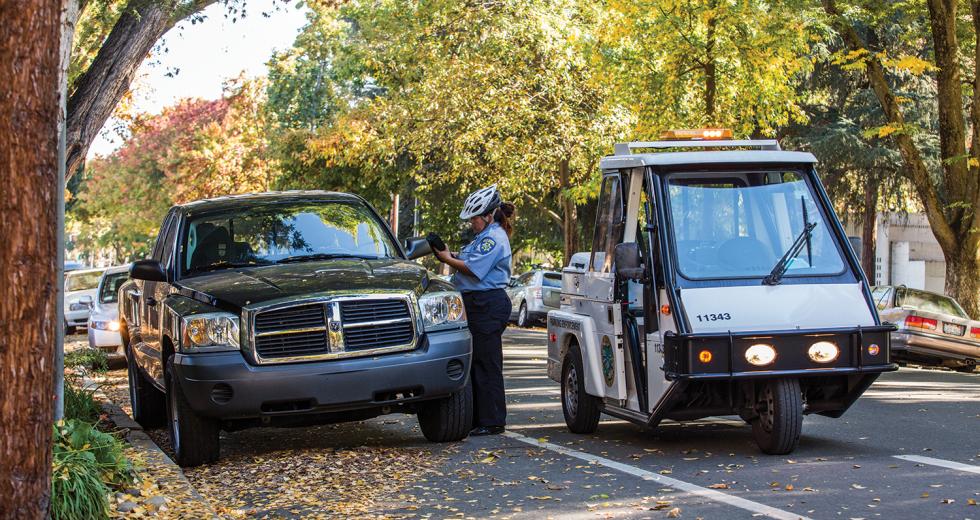In one of the first actions designed to help the city of Sacramento move forward next year, the City Council OK’d a proposal concerning where we all stop.
In October, the council passed the Zoning Code Parking Update — not sexy, but consequential. Conceptually straightforward, it’s meant to update the parking code so urban and midtown business-development projects don’t have to meet suburban-level minimum parking-place requirements. In application, it’s a declaration that the city wants to encourage economic development — and create jobs — in its central business district.
“The parking codes in many parts of the city, especially areas developed before the advent of automobiles, were excessive,” says Tom Pace, Sacramento’s principal planner. “In other areas, there is no land for parking places. So we had a parking code that was depressing development and re-use of existing buildings.”
If developers wanted to start a new project, the difference between moving forward or calling it quits could have been burdensome parking requirements. Those might have required underground parking garages or giving up such a big chunk of parcel for parking that it wasn’t useable for a retail space, for example.
Before the update, a waiver process was in place to bypass the parking requirements, and in almost every case the waiver has been granted. But the process still involved a lengthy public hearing process — itself a turn-off to most developers — and added several weeks or months to a project timeline.
“We have several stories of developers who, once they understood the parking requirements or the steps involved in getting a waiver, we’d never heard from again,” Pace says.
From the standpoint of the business community, which supports the proposal, the parking code update shows Sacramento is ready to recognize itself as a large city and remove barriers to development.
“When you go to places like San Francisco or Los Angeles, you know how hard it can be to find parking, but that is part of the urban experience,” says Dennis Rogers, senior vice president of policy and economic development for the Sac Metro Chamber. “But that experience also requires increased services, including access to public transit.”
The parking code update will do a lot to encourage investment, but many leaders view it as only one side of a coin that, as a whole, recognizes the changing nature of societies. Those transitions feature more people moving to central city areas, growing demand for walkable communities and greater need for reliable public transit.
“It’s vital that we make the entire central-city-user experience better,” says Kevin Greene, policy manager for the Downtown Sacramento Partnership. “We need to look at a transit system that people driving in from the suburbs feel confident they can use to get in and out of the city on a reasonable schedule, both before work and after the bars close.”
Elizabeth Studebaker, executive director of the Midtown Business Association, agrees. She says that though hunting for parking is part of the experience in a thriving business district, making it possible for people to come into the area without their cars must be a focus.
“Many times of day, midtown is more congested than downtown — we have 20,000 employed in midtown during the day and a vibrant nightlife,” she says. “We certainly want to encourage more density in midtown, and while updating the parking code helps with that objective, it can and should foster environmentally smart growth by encouraging more people to use public transit, ride bikes and walk.”
The council vote to update the parking codes was unanimous. Throughout the process, there was no organized opposition, but residents in the midtown area have expressed concerns. Specifically, loosening parking requirements on some kinds of new development, such as nightclubs and bars, might spawn an increase in cars parked on neighborhood streets and more problems for residents as night revelers return to their rides. City staff has been working closely with residents, however, and has an arsenal of tools available — permit parking, no-parking zones and time limits, for example — to mitigate those problems.
The council’s October vote causes the parking code update to take effect this month. It will be the first of several regulatory updates city staff and the council will examine as the city implements its 2030 general plan.
“Over the next six to 12 months, we’ll be rolling out other zoning code changes to encourage reinvestment and revitalization in other, older urban areas of the city that have been passed over,” says Greg Sandlund, an associate planner for Sacramento. “We hope and expect that with these changes we’ll see more investment, more jobs and more economic vitality in our city.”
Recommended For You

Streetcar Named Desire
Funding questions loom over downtown streetcar project
For nearly two decades, local city officials have envisioned a streetcar that would transport residents and visitors across downtown Sacramento.



